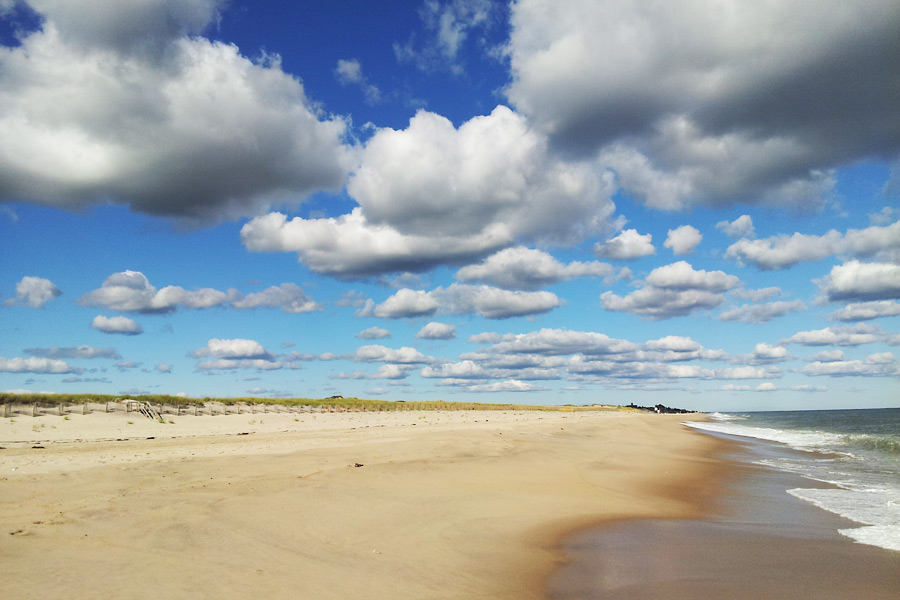Beaches: We All Own Them, We Are Free to Use Them, Until We Are Not

I have always thought the ocean beaches out here were well protected by the Southampton and East Hampton Town Trustees. The beaches are open to all. Everyone has the right to walk on them and do things that are not prohibited by local law. Allowed are boating, fishing, beachcombing, surfcasting, sunbathing, surfing and most every other familiar beach activity. One can even earn a living from the sea. Commerce is permitted. In the 19th century, before paved roads, horses could pull carriages or wagons on the ocean beach from one town to another. The beaches were afforded the rights of public highways.
In the last few years, however, private homeowners along the beach have challenged the right of the public to either use or have access to the beach in front of their property. In Napeague, a lawsuit was filed two years ago aimed at preventing people from using nearly a mile of beach. It’s in the courts now. The homeowners there say that at one time, the transfer of title by one landowner to another failed to mention the rights of the public, so they want the public off that stretch.
In an earlier challenge, homeowners won a lawsuit which claimed the Trustees’ rights did not extend to Montauk because that was never spelled out. The Trustees no longer oversee the beaches in Montauk.
As I recall, down at the beach in Bridgehampton, a private homeowner sued and won a lawsuit that prevents the Trustees or the Town or anyone else from driving a vehicle down a sand road to the ocean beach, even though the sand road is entirely on land the Town of Southampton owns. This decision came about because the paperwork involving defending this lawsuit was lost. One attorney thought a special attorney had them and the special attorney thought the other attorney had them. When the court demanded the paperwork, they defaulted.
There’s more. In 2011, a woman at Georgica Beach in East Hampton named Mollie Zweig placed steel poles in that beach and said she’d put up a fence to close off the beach in front of her property. With erosion, the beach was her property. She put NO TRESPASSING signs up. The Village of East Hampton issued her a stop-work order. But no official ordered the structure removed for various legal reasons. The result? The poles in the sand stayed there for months before the ocean washed them out.
Finally, there is Ron Baron the owner of the largest oceanfront property on Further Lane in East Hampton who installed two huge parallel reinforced concrete “retaining walls” across the environmentally protected double dunes in front of his house. The walls, together, from base to top, rise 4-8 feet. There was nothing that needed “retaining.” And, after a year, the walls are still up.
“I think this could wind up in court,” a Town Planning Board member told me. The “double dunes,” never before built upon, have been there for thousands of years.
Elsewhere, in Sagaponack, the authorities have approved a special oceanfront beach erosion tax district so 124 oceanfront homeowners can now spend tens of millions of dollars to protect their homes by bringing in one million cubic yards of new sand to replace beach sand that has been washed away storms.
When I was a boy, my parents took me down to Miami Beach where we visited the Fontainebleau hotel which sat right on the ocean beach there. You could walk out to the swimming pool and just beyond it, walk down the beach and jump in the ocean.
This past month, my wife and I visited Miami Beach and then went further south to stay on a beautiful Caribbean beach called Grace Bay on the Caribbean island of Providenciales in the Turks and Caicos.
The situation at the Fontainebleau is very different there now. Since I was there, huge amounts of erosion had washed away nearly all the beach, not only in front of this hotel, but all of them. And so in 1977, the Federal Government built stone groins and, over them, poured hundreds of tons of sand to buttress the beaches.
Today, the Fontainebleau is no longer directly on the ocean. You walk out to a city-owned narrow walkway, bordered by gardens, that extends for three miles parallel to the ocean between the hotels and the sea. It’s a great walkway for joggers, walkers, even bicyclists. Trails take you down to the hotels on one side and the ocean beach on the other. And access to it comes from paths from inland streets.
A similar situation exists in the Turks and Caicos, a British Overseas Territory. There is no walkway, this island is not so populated as to need that, but along Grace Bay Beach, where about 30 hotels sit in an arc facing the sea, there are signs reminding people that “Please be aware that Grace Bay Beach is a National Park open to the public.”
The Trustees here on the East End were created at the behest of the King of England in a patent issued by the crown in 1686. But the Trustees depend upon the Towns for their funding. And indeed, Townships have only so much to give the trustees.
If local oceanfront homeowners continue to insist that the beach in front of their home belongs to them and they can chase people off or call the police to have them do it, perhaps the time has come for the Trustees and Town officials to request that the State of New York or even the Federal Government join them in defending the people’s rights to our great treasured beaches here on the East End.
Otherwise, it just might be “money talks, nobody walks” and those not walking on the beach will be you.



